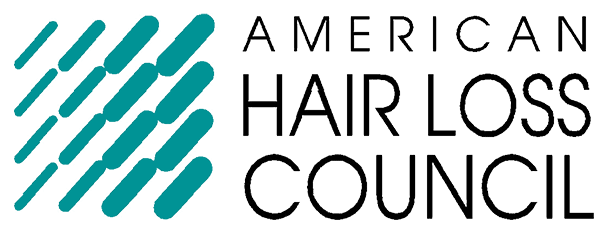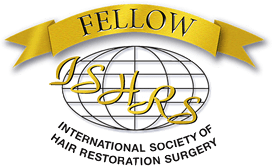THE NEW HAIR TRANSPLANT
The following is an excerpt from The New Hair Transplant, a new book authored by Dr. Bauman, Dr. Edwin Epstein and Dr. Robert Leonard. Follicular Unit Micrografting Scalp hair—at the top, sides and back of the head—grows in groupings of individual hairs. When viewed using five to ten powers of magnification, we can clearly see clusters of one to four strands of hair growing from each follicle in the skin. We call these groupings, “follicular units.” Typically, the majority of scalp hair follicles (approximately seventy percent) contain one hair; an estimated twenty-five percent contain two hairs; and, less than five percent of follicles have three to four hairs. An average follicular unit measures one millimeter in size. And, each unit contains an average of 2.2 hairs. This is why it is possible to yield one thousand follicular unit grafts containing approximately twenty-two hundred hairs from a donor strip of scalp measuring one centimeter wide by ten centimeters long. With follicular unit grafting, we surgically harvest hair from the donor site keeping each unit intact. Trimming the Fat Once the hair follicles are harvested from the donor site, the resulting ‘donor strip’ is preserved in a saline solution while the surgical team tends to the task of dissecting the individual units. As part of this process, it is essential to trim away the excess fatty tissue surrounding the harvested follicles. This is a critical surgical step for two reasons. For one, each follicular unit must fit into the very small incisions that form the foundation of the new hairline. Additionally, trimming this tissue eliminates the occurrence of the unnatural gaps between each grouping of transplanted hair. (These wide spaces cause the “pluggy look” in patients who underwent hair transplants performed by surgeons using older, less sophisticated surgical techniques). Transplanting Follicular Units into the New Hairline Following the dissection and trimming processes, the follicular unit groupings of one, two, three and four hairs are meticulously implanted into each recipient site in the new hairline. As each tiny cluster of hair grows with little skin between the follicles, the patient will reap the benefit of a dramatically improved surgical hair restoration.
Trichophytic Donor Closure
New “Trichophytic” Donor Closure Technique Reduces Scar Visibility…
Boca Raton, FL–The new “Trichophytic Donor Closure” technique allows for improved camouflage of a linear donor scar. Before the trichophytic (aka “tricho”) closures, a patient could expect their donor scar to be 0-2mm in width. Normally, the surrounding hair would easily cover the scar. For some patients with very short hairstyles or buzzcuts, the resulting donor scar could sometimes be visible. The trichophytic closure is a type of ‘overlapping’ technique which results in hair growing directly through the donor scar. This can dramatically improve coverage of the donor scar in those with short hair.
Dr. Bauman uses the trichophytic donor closure technique as a routine part of all of his linear donor harvests. For patients with short hair, this offers an acceptable alternative to FUE (Follicular Unit Extraction), which is typically a less efficient (and oftentimes more expensive) way to harvest hair from the donor. Dr. Bauman believes that there is still a role for FUE, but that the benefits of a trichophytic closure make FUE a somewhat less attractive option for some patients.
The trichophytic donor closure can be used on patients who have had previous procedures and are looking for improvement in the camouflage of their donor scar, as well as patients who are undergoing hair transplantation for the first time. For more information on trichophytic or ‘tricho’ donor closure techniques, email Email Dr. Bauman or call 1-561-394-0024
SURGICAL HAIR RESTORATION TECHNOLOGIES
Video-Microscopic Dissection As part of Dr. Bauman’s commitment to his patients, he has developed and invested in the latest technologies required to consistently achieve the high level of surgical precision at which he and the Bauman Medical Group surgical team work each day. 
In this photo, a Surgical Technician at Bauman Medical Group is dissecting individual hair follicles and follicular units under one of Bauman Medical Group’s powerful new digital video microscopes. Improved visualization of the follicles in the harvested donor tissue is now possible.
A ‘quantum leap’ in ergonomics and magnification, the videoscopes mean a more efficient dissection process, a better quality and quantity of grafts, and therefore, better results for every patient. READ MORE
Trichophytic Donor Closure is an alternative to FUE
New “Trichophytic” Donor Closure Technique Reduces Scar Visibility…
Boca Raton, FL–The new “Trichophytic Donor Closure” technique allows for improved camouflage of a linear donor scar. Before the trichophytic (aka “tricho”) closures, a patient could expect their donor scar to be 0-2mm in width. Normally, the surrounding hair would easily cover the scar. For some patients with very short hairstyles or buzzcuts, the resulting donor scar could sometimes be visible. The trichophytic closure is a type of ‘overlapping’ technique which results in hair growing directly through the donor scar. This can dramatically improve coverage of the donor scar in those with short hair.
Dr. Bauman uses the trichophytic donor closure technique as a routine part of all of his linear donor harvests. For patients with short hair, this offers an acceptable alternative to FUE (Follicular Unit Extraction), which is typically a less efficient (and oftentimes more expensive) way to harvest hair from the donor. Dr. Bauman believes that there is still a role for FUE, but that the benefits of a trichophytic closure make FUE a somewhat less attractive option for some patients.
The trichophytic donor closure can be used on patients who have had previous procedures and are looking for improvement in the camouflage of their donor scar, as well as patients who are undergoing hair transplantation for the first time. For more information on trichophytic or ‘tricho’ donor closure techniques,Email Dr. Bauman or call 1-561-394-0024





 Dr. Alan J. Bauman, M.D.Hair Loss & Hair Transplant ExpertBoca Raton, FL
Dr. Alan J. Bauman, M.D.Hair Loss & Hair Transplant ExpertBoca Raton, FL







